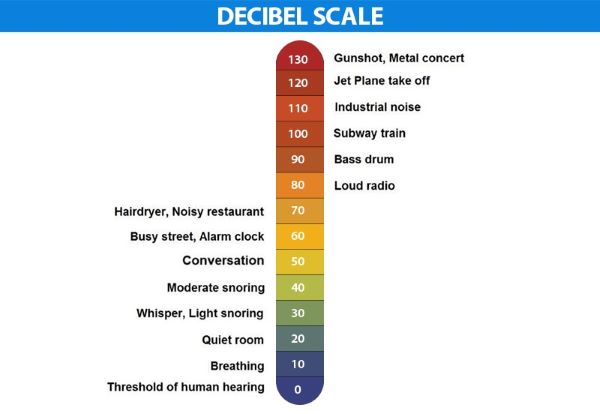
Understanding decibels (dB)
What is a decibel (dB)
A unit used to measure the intensity of a sound or the power level of an electrical signal by comparing it with a given level on a logarithmic scale.
(in general use) a degree of loudness.“his voice went up several decibels.”
What is the decibel scale?
The human ear is a highly versatile and unique hearing device. It has a clever in-built mechanism that reduces its sensitivity as the sound level rises. It also has the remarkable ability to handle an enormous range of sound power levels. It can hear the sound of a pin dropping close by and the roar of a jet engine far away.

Noise Measurement Units
When you measure noise levels with a sound level meter, you measure the intensity of noise called decibel units (dB).
The basic rules for working with decibels
Every 10dB change represents a doubling or halving of sound energy
| Change in dB | Change in sound energy |
|---|---|
| 10 dB increase | sound energy is doubled |
| 10 dB decrease | sound energy is halved |
| 10 dB increase | sound energy is increased by a factor of 10 |
| 10 dB decrease | sound energy is decreased by a factor of 10 |
| 20 dB increase | sound energy is increased by a factor of 100 |
| 20 dB decrease | sound energy is decreased by a factor of 100 |
Every 10 decibels(dB) reduction in noise level is roughly perceived as a halving of the perceived loudness. So, for instance, if you have a sound that measures 70dB and it decreases to 60dB, it would sound about half as loud to the human ear.
Noise reduction figures displayed on products and soundproofing systems
When looking at soundproofing solutions, it is important to remember that when you are analysing airborne sound reduction, the higher the value, the better the product or system performs. When looking at impact sound reduction figures, the lower the number, the better the product or system performs.
A difference of ten decibels can mean a 50% change in the noise level reduction.
